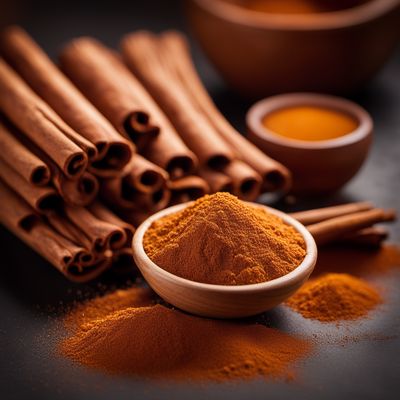
Ingredient
Balsamic vinegar flavour
The Tangy Elixir: Unveiling the Magic of Balsamic Vinegar
Balsamic vinegar flavor is characterized by its rich, dark color and syrupy consistency. It has a sweet and tangy taste with a hint of acidity, and its flavor profile can range from mildly sweet to intensely tart. The texture is smooth and velvety, while the appearance is glossy and inviting. This flavor enhancer is often used to balance and elevate the taste of various dishes, providing a unique depth and complexity.
Origins and history
Balsamic vinegar flavor originated in Italy, specifically in the regions of Modena and Reggio Emilia. Its history dates back to the Middle Ages, where it was initially produced as a medicinal tonic. Over time, it gained popularity as a culinary ingredient and became a staple in Italian cuisine. Today, traditional balsamic vinegar is still made using traditional methods, including aging in wooden barrels for several years to develop its distinct flavor.
Nutritional information
Balsamic vinegar flavor is low in calories, with approximately 14 calories per tablespoon. It contains no fat or cholesterol and is a good source of antioxidants, including polyphenols, which have been linked to various health benefits.
Allergens
Balsamic vinegar flavor is typically free from common allergens such as gluten, dairy, and nuts. However, individuals with sulfite allergies should be cautious, as some brands may contain sulfites as a preservative.
How to select
When selecting balsamic vinegar flavor, opt for brands that indicate "Aceto Balsamico di Modena" or "Traditional Balsamic Vinegar" on the label, as these are indicators of quality. Look for a dark, syrupy consistency and avoid products that contain added sugars or artificial flavors.
Storage recommendations
To maintain the freshness and quality of balsamic vinegar flavor, store it in a cool, dark place away from direct sunlight and heat sources. Once opened, tightly seal the bottle and refrigerate to prolong its shelf life.
How to produce
Balsamic vinegar flavor is typically produced through a lengthy process of fermenting and aging grape must. However, for amateur enthusiasts, it is more practical to purchase commercially produced balsamic vinegar and experiment with infusing it with additional flavors, such as fruits or herbs.
Preparation tips
Balsamic vinegar flavor can be used in a variety of ways, such as drizzling it over salads, marinating meats, or adding a few drops to enhance the flavor of sauces and dressings. It is also a delightful accompaniment to fruits, cheeses, and even desserts like strawberries and ice cream. When using balsamic vinegar flavor, start with a small amount and gradually adjust to taste, as its intense flavor can easily overpower other ingredients.
Culinary uses
Balsamic vinegar flavor is widely used in Italian cuisine, particularly in dishes like Caprese salad, bruschetta, and risotto. It also pairs well with roasted vegetables, grilled meats, and even as a glaze for desserts like panna cotta or roasted peaches.
Availability
Balsamic vinegar flavor is commonly available in grocery stores and supermarkets worldwide, with Italian brands being the most renowned.
More ingredients from this category » Browse all

Peach flavour
The Essence of Summer

Honey flavour
The Sweet Essence of Nature

Carob flavouring
Carob Flavouring: A Natural Alternative

Cinnamon flavour
The Warm Embrace of Cinnamon

Thyme flavour
The Aromatic Herb: Thyme

Berries flavour
"Nature's Burst of Berry Bliss"

Truffle flavour
The Essence of Earthly Delight

Banana flavour
"The Sweet Symphony of Banana Essence"

Sweet flavour
The Sweet Symphony of Taste

Peppermint flavour
The Refreshing Essence: Peppermint Flavour

Jackfruit flavour
The Tropical Delight

Brandy orange flavour
The Essence of Citrus Elegance